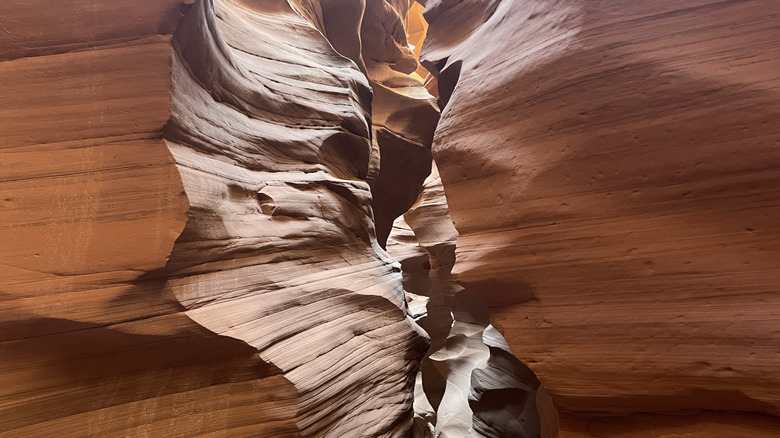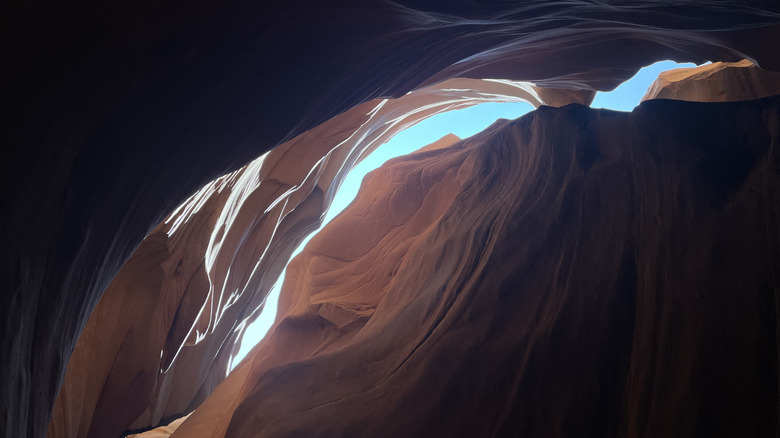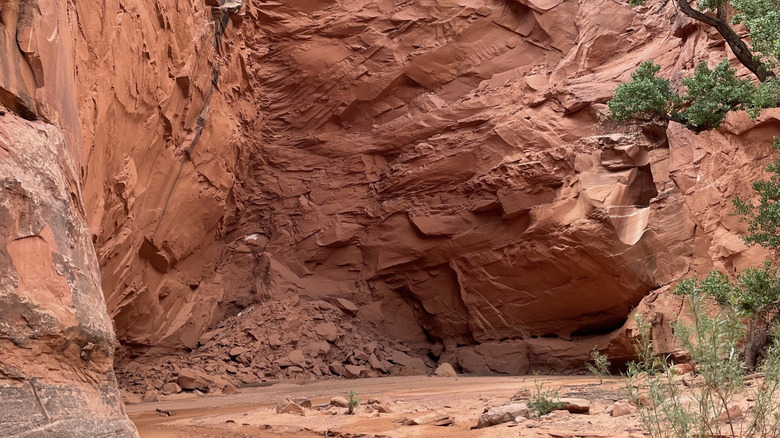Hidden Deep In A Sun-Scorched Utah Canyon Is A Maze Of Soaring Walls, Secret Slots, And Serenity
Canyonlands National Park is a fantastic place to get lost — or to hide. The remote landscapes in present-day southern Utah served as a secret refuge for a notorious crew of bandits, Butch Cassidy and the Wild Bunch, on their journey along the so-called Outlaw Trail from Texas to Montana in the late 1800s. According to legend, after completing a heist, Cassidy particularly favored retreating to a secluded canyon area called Robbers Roost. It's near here, about a two-hour drive from Moab, that you'll find Blue John Canyon and its labyrinth of curving sandstone walls, quiet trails, and cold freshwater pools.
The destination takes its name from another legendary outlaw, John Griffin. He was nicknamed Blue John because his eyes were two different colors — blue and brown. According to the story, Blue John disappeared in the area during a floating expedition in the late 19th century. Today, the canyon is even more closely associated with another adventurer.
Take the infamous journey through Blue John Canyon
Aron Ralston, a seasoned mountaineer and climber, was exploring the canyon on a solo trip in 2003 when an overhead rock came loose, pinning his arm and trapping him between boulders. After several days wedged in place and unable to call for help, he saved his own life by amputating his arm with a pocket knife. The incident was depicted in Danny Boyle's 2010 feature film "127 Hours," bringing a wave of public attention to Ralston and newfound interest in the Canyonlands captured on the screen.
Despite Ralston's story, you don't need to have advanced skills (or take unreasonable risks) to visit the canyon. Blue John Canyon is indeed an extremely popular technical slot canyon, and if you want to try more difficult climbs, you'll need advanced canyoneering expertise. But beginners with rappelling experience can try this eight-hour loop that starts and ends at Granary Spring.
Interested in visiting more slot canyons in the Southwest? Consider this Utah gem with a unique narrow squeeze called The Crack and one of Nevada's most unusual slot canyons, a colorful gem full of ancient rock art.
Explore important tips for visiting Blue John
What do visitors need to know if considering a trip to Blue John Canyon? First, learn from Ralston's mistakes. It's best not to venture into the park alone, and if you do, leave a detailed itinerary with a trusted contact. The eight-hour trek is best attempted in spring or fall when the weather is mild. Bring plenty of food and water, a helmet, and rappelling equipment. Natural pools sometimes form along the route, and flash floods are possible, so it's good to have dry bags on hand — and don't be surprised if you need to swim at some point.
The National Park Service runs two campgrounds in the area. There are also other campsites, hotels, motels, food options, and a gas station in the nearest town of Hanksville, about an hour's drive away. Though roads are navigable in conventional vehicles, you'll need four-wheel drive if there's rain or snow in the forecast (which is probably not the best time to go into Blue John Canyon, anyway).
Continuing on a road trip through the region? See the best itinerary for a scenic road trip to Utah's five national parks, and consider a detour down one of Utah's most scenic roads that ends at a breathtaking canyon.


